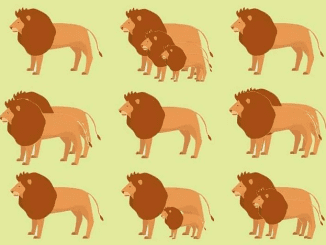Remember the last time you purchased a suit? Even if it seemed like a perfect fit off the rack, chances are it needed a few alterations. As you stood there in front of the mirror, the tailor deftly marked the fabric, indicating where adjustments were needed. While you were probably focused on the price, material, and overall fit, you might not have given much thought to the small piece of chalk in the tailor’s hand. That tool, known as tailor’s chalk, is a crucial part of the tailoring process, and there’s an entire world of knowledge behind this seemingly simple tool.
Understanding Tailor’s Chalk: What Makes It Unique?

Isn’t all “chalk” the same? It’s a common misconception, but the truth is that tailor’s chalk is quite different from the chalk most of us are familiar with. When people think of chalk, they usually picture the white sticks used on chalkboards in classrooms or cafes. This type of chalk, made from limestone or Plaster of Paris, is not suitable for fabric marking due to its hardness and potential to leave permanent marks on delicate materials.
Tailor’s chalk, on the other hand, is specifically designed for use on textiles. Typically made from clay, wax, or a combination of both, this chalk leaves temporary marks that are easy to see yet simple to remove, making it perfect for marking fabric for alterations.
The Types of Tailor’s Chalk: Which One Is Right for You?
Tailor’s chalk comes in three main formulations: clay-based, wax-based, and a combination of both. Each type has its own strengths, making them suitable for different fabrics and marking needs.
1. Clay-Based Tailor’s Chalk
Clay-based tailor’s chalk is a classic choice, known for its smooth application and easy removal. It typically comes in triangular or square shapes, which provide sharp edges for precise marking. This chalk is made through high-impact compression, resulting in a solid piece that holds up well under pressure.
This type of chalk is favored for its clear, defined lines, which are crucial when precision is key. However, it’s important to note that if pressed too firmly, clay-based chalk can be harder to remove, especially if the fabric is exposed to heat or dry cleaning.
2. Wax-Based Tailor’s Chalk
Wax-based tailor’s chalk is another popular option, particularly for marking heavier or darker fabrics. This type of chalk is durable and long-lasting, often available in square pieces or pencil-like shapes. Wax-based chalk glides smoothly over fabric, leaving a more robust line that’s ideal for thicker materials like denim or wool.
However, wax-based chalk can be more difficult to remove than clay-based varieties. The marks can sometimes be ironed out (as the heat melts the wax), but it’s always best to test on a small area first to ensure it doesn’t leave a stain.
3. Everlast Tailor’s Chalk
For those who want the best of both worlds, Everlast tailor’s chalk is a blend of clay and wax. This combination offers the durability of wax-based chalk with the smoother application of clay-based chalk. Everlast chalk is designed to provide a secure grip, thanks to its distinctive groove patterns, making it easy to handle during detailed work.

Choosing the Right Color: Why It Matters
Tailor’s chalk comes in a variety of colors, with white and yellow being the most popular. The choice of color is crucial, as it must contrast well with the fabric to be easily visible. Darker fabrics typically require white or yellow chalk, while lighter fabrics may call for blue or red. The key is to select a color that stands out without risking any permanent marks.
Removing Tailor’s Chalk: Ensuring a Clean Finish
One of the most important features of tailor’s chalk is its removability. After the alterations are complete, the last thing you want is for those helpful marks to remain visible. Here’s how to remove different types of tailor’s chalk:
1. Clay-Based Chalk: This chalk is usually easy to brush off, especially if applied lightly. However, if it’s been pressed in or exposed to heat, it might require a bit more effort. A gentle brushing or a damp cloth can often do the trick.
2. Wax-Based Chalk: Wax-based chalk is a bit trickier to remove. Using a dry iron on low heat can help melt the wax, allowing it to be absorbed into a piece of paper towel placed over the mark. Alternatively, freezing the fabric can make the wax brittle, making it easier to scrape off.

3. Disappearing Tailor’s Chalk: As the name suggests, this chalk is designed to disappear after a certain period. It’s a great option if you want to avoid any post-alteration cleanup. However, it’s important to remember that these marks can fade quickly, so work efficiently if using this type.
Using Tailor’s Chalk: Tips for Precision and Efficiency

To get the best results with tailor’s chalk, keep the following tips in mind:
1. Maintain a Sharp Edge: Always use the sharp edges of your chalk for clean, precise lines. If your chalk becomes rounded, you can sharpen it using a tailor’s chalk sharpener or by carefully carving a new edge with a knife.
2. Mark on the Wrong Side: Whenever possible, make your marks on the wrong side of the fabric. This ensures that any remaining residue won’t be visible on the finished garment.
3. Test First: Before applying chalk to the actual garment, test it on a scrap piece of the same fabric. This helps you gauge how well it will show up and how easily it can be removed.

Conclusion: The Essential Role of Tailor’s Chalk in Crafting Perfect Garments
Tailor’s chalk may be a small tool, but it plays a crucial role in the world of tailoring and sewing. Whether you’re a professional tailor or a sewing enthusiast, understanding the different types of chalk and their applications can significantly improve the precision and quality of your work. From selecting the right color to ensuring easy removal, mastering the use of tailor’s chalk will help you achieve flawless results in every project. So next time you step into a tailor shop or start a sewing project, you’ll have a newfound appreciation for this unassuming yet indispensable tool.


